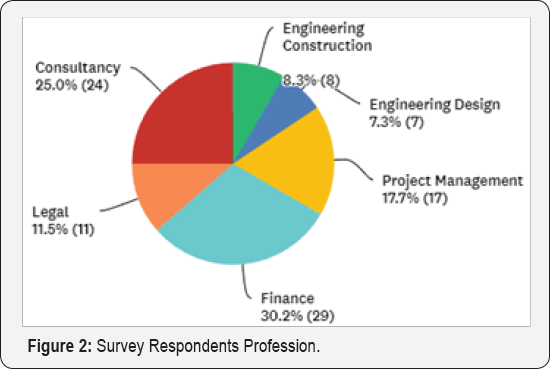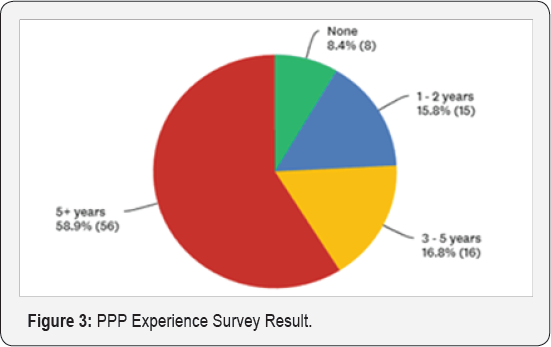Design and Development of a Risk Identification and Analysis Tool (RIAT) for Australian Public-Private Partnership Infrastructure Projects- Juniper Publishers
Juniper Publishers- Journal of Civil Engineering
Introduction
The recent history of failed and inefficient
Public-Private Partnership (PPP) infrastructure projects across
Australia, due to their inappropriate risk identification and analysis,
suggests the need to rethink a more appropriate and robust mechanism
that not only quantifies the risk but also selects the optimal
allocation of risk for all participants involved in a PPP project
Australian Infrastructure Plan [1].
Past studies and research have identified the need to improve the
quality of decision making in PPP projects. The variability of risk
management processes and the lack of lucid and systematic practices
towards risk analysis and allocation have often proved to be the
downfall of PPP projects in Australia Fischer [2].
The research aims to design and develop a
computerized Risk Identification and Analysis Tool using Visual Basics
Application (VBA) that would assist stakeholders of PPP's in
appropriately assessing and quantifying the risks inherent to such
projects. The desired ultimate outcome is the enhancement of the
capability and accuracy of the decision-making process in PPP projects.
Methodology
Figure 1
illustrates the methodology employed during this research
investigation. Figure1 Summary of Research Methodology. The researchers
have identified 33 risk factors (RFs) as being significant in
influencing the success of a PPP projects. A list of over 2000 potential
survey respondents was then constructed based on the core project
stages of a PPP Project. The survey targeted industry professionals from
both the public and private sector with relevant experience in PPPs
ranging from: site engineers, project managers, legal and finance
experts, consultants and public agents (Figure 2)-such
as various state treasury departments and Federal Ministers. The Delphi
survey asked for respondents to rank the initial 33 RFs separately for
likelihood and severity on a 1-5Likert scale (with 1 = very low / no
influence to 5 = almost certain / catastrophic influence).


Data Analysis
A suite of mathematical functions was then
subsequently applied to the survey results. These included Factor
Analysis and Fuzzy Synthetic Evaluation. Factor Analysis is a common yet
powerful mathematical process whereby a relatively small number of
factors can be determined to represent a larger sample size Norusis [3].
Such an analysis comes in many forms such as common factor analysis,
image factoring, maximum likelihood method and Alfa factoring, however
for this research investigation Principal Components Analysis (PCA) has
been used due to its appropriateness for use in conjunction with Delphi
Studies Yazdani-Chamzini 2014. Some critical assumptions that underpin
such a method include a 1:5 ratio for variables to cases, some
correlation between factors, a linear relationship between the
variables, and the removal of outliers Lingard and Rowlinson[4] . This factor analysis further reduced the factors to key critical risk factor groups (CRFGs).
Fuzzy Set Theory (FST) is useful in situations where
the inputs into a system are "fuzzy", ill-defined or subjective in
nature, but the outputs must be clear and objective Chan et al.c.[5]
. For this research investigation, the inherent nature of the data
collected is subjective as it is based on the independent assessment of
the industry professionals surveyed; hence Fuzzy Set Theory was deemed
appropriate. Fuzzy Synthetic Evaluation (FSE) is commonly used in
various risk management applications, as it is capable of synthetically
evaluating 'an object relative to an objective in a fuzzy decision
environment with multiple criteria' Zhao et al. [6].
The ability to deal with multiple qualities and components is a key
advantage of FSE in assisting with complicated decision making and
evaluations Mu et al. [7].
In this research FSE allows for the risk profile of PPP projects to be
determined, utilising three levels of risk: critical risk factors, risk
groups, and overall risk. This method will require the following
components:
a) A family of factors, where m is the number of factors: E= {Ci, 2, C3 }
b) A set of alternatives:E={e1,2e3,_,en}
c) And an evaluation matrix: R= (rij) , where rijdenotes the degree to which ej satisfies the factor ci
VBA Model
The above process and resulting risk evaluation
analysis tool was then computerised and automated through the
utilisation of Excel with VBA. Excel was deemed an appropriate due to
its widespread utilisation across the industry and ability to establish
an easy to use interface. The end-user can input their subjective risk
evaluations for a PPP project, and the expert intelligent system will
produce a quantitative analysis of the overall risk level of the project
and identify the key RFs that will need mitigating, as balanced against
the expert opinion bank and end user expertise.
Results and Discussion
The online survey was closed after approximately 3
months with a total of 96 conforming responses gathered, with 76% of the
respondents from the private sector and 79% with over 10 years'
experience in the industry. Figure 3
below illustrates the breakdown of the respondents’ PPP experience. The
bank of survey responses was analysed and any outliers removed. The
subsequent mean scores of each RF in terms of its the probability of
occurrence and severity were calculated using:

Where: f = frequency of each rating (1-5) for each
RF, s = corresponding score given to each RF and N = total number of
survey responses for a specific RF. The subsequent impact (Risk impact =
-/(Probability x Severity) and thus ranking for each RF was determined
using normalisation, with RF values greater than 0.5 being classified as
critical risk factors (CRFs). 12 CRFs were identified with the top
three observed as:
a. Delays in construction/completion
b. Construction cost overruns and
c.Demand forecasting risks
Factor analysis utilising factor extraction with Vari
max rotation and Kaiser Normalisation was performed using Statistical
Package for Social Sciences (SPSS). The data was tested for
appropriateness using Kaiser-Meyer-Olkin (KMO) and supported with
Bartlett's Test of Sphericity. As the KMO factor (0.814) was greater
than 0.5 the factor analysis performed acceptable.
The four Critical Risk Factor Groups (CRFGs) observed were:
1) construction and operation risks
2) financing/consortium risks
3) political risks and
4) market risks
Each of the 12 CRFs fitted into one of the above CRGs
and the subsequent weightings of each CRF was calculated on a weighted
average of the mean scores. For each specific CRF the membership
function was formed as a part of the FSE. For example, the demand
forecasting RF for severity of occurrence was; 7% scored it very low,
19% as low, 35% as moderate, 32% as high and 7% as very high, as a
result the membership function level 3 was expressed as (0.07, 0.19,
0.35, 0.32, 0.7). The same was generated for the probability of
occurrence [(0.14, 0.27, 0.41, 0.14, 0.04)]. To obtain membership
function level 2 the individual weighting of each CRF was multiplied and
summed by its corresponding linguistic variable (very low (1)-very
high(5) ). This process was repeated to form the overall risk index
(level 1), but instead the CRFG weightings were used.

A VBA interface (Figure 4)
was created to allow the end user to input their project specific
details, such as: size, location and type of PPP and the extent to which
they would like to weight their judgement and the survey data bank
results. The output page illustrates the overall risk levels for each of
the CRGS as well as the quantified risk level of the project on a 1-5
scale.
Conclusion
This research investigation presents a Fuzzy
Synthetic Analysis approach to establishing a quantitative, hands-on and
user-friendly tool based on subjective experts' beliefs sourced from
leading Australian PPP professionals. In doing so this research allows
industry practitioners, be it public or private, to better identify and
assess the risk level of a PPP project based on objective results rather
than subjective judgement. Future works in this area would focus on
developing a system that updates the expert opinions continually as well
as encompassing allocation of risk to the relevant party's as a means
of further developing the tool.
For More Open Access Journals Please Click on: Juniper Publishers
Fore More Articles Please Visit: Civil Engineering Research Journal


Comments
Post a Comment